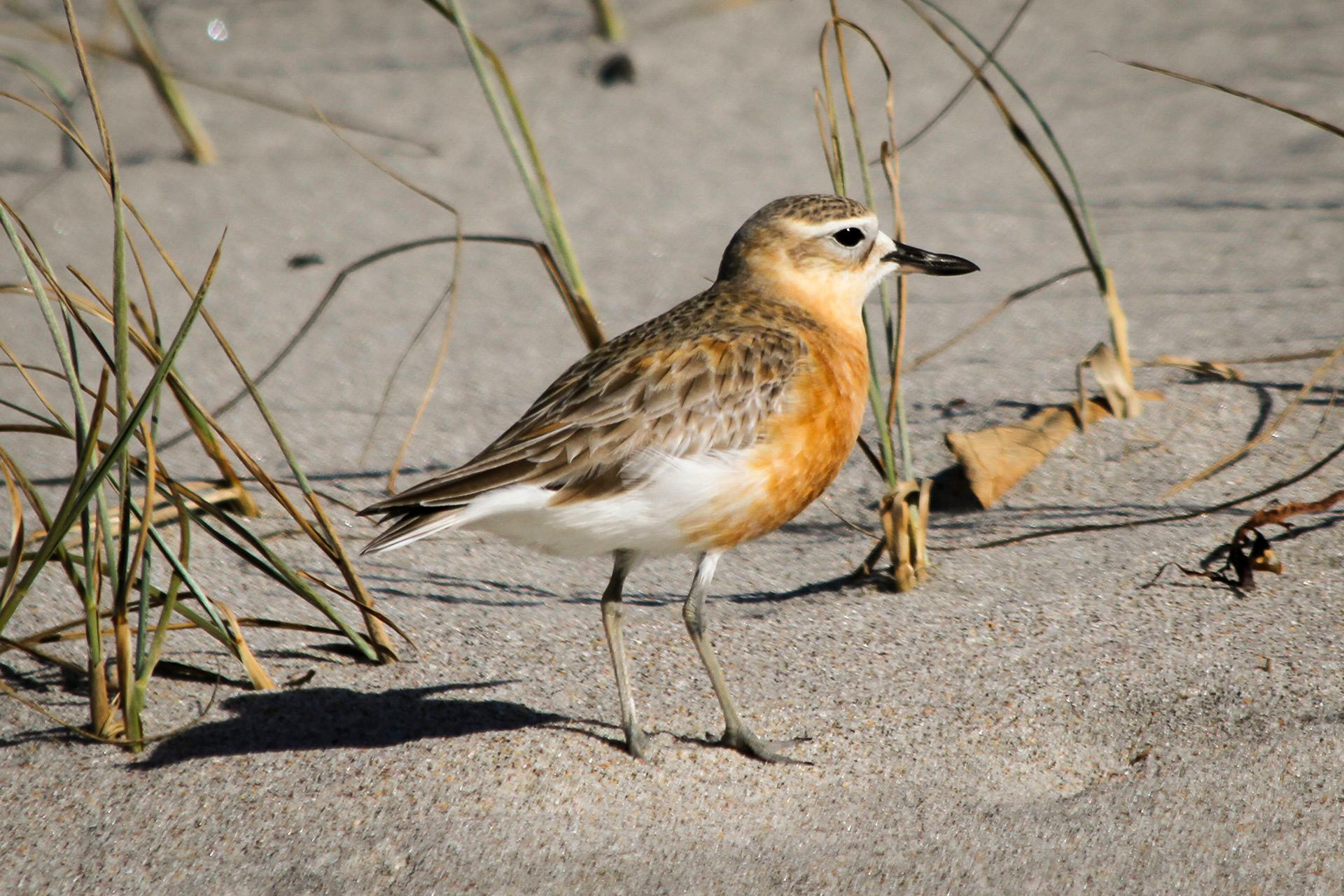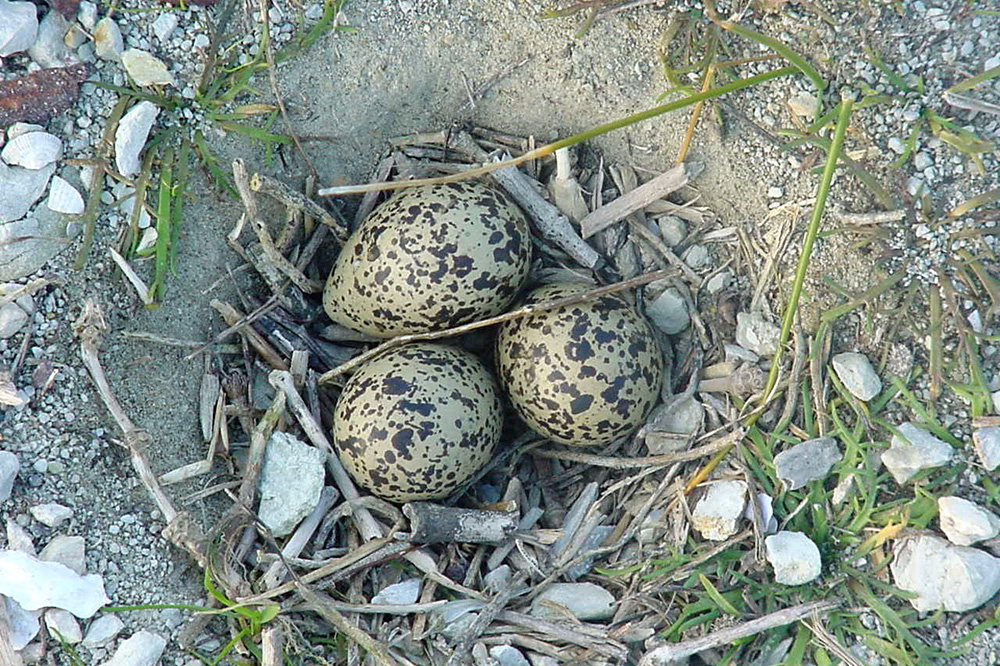New Zealand dotterel (tūturiwhatu)
The New Zealand dotterel, tūturiwhatu, is a threatened shorebird, found only in New Zealand. This much-loved native bird has two subspecies.
The Northern New Zealand dotterel is found in coastal areas around parts of the North Island, with a conservation status of threatened – nationally increasing and a total population of more than 2,500.
The Southern New Zealand dotterel meanwhile is critically endangered. A population count by DOC found only 101 birds in 2024, a reduction of 19% from the 2023 population of 126.
Tūturiwhatu are vulnerable because they nest on the ground, in a ‘scrape’ in the sand and young birds and eggs fall prey to pest animals. Human activity on beaches is a major threat as well as loss of habitat due to coastal development.
These charming little birds are found on sandy beaches and tidal estuaries, well camouflaged in brown and off-white with the plumage on their chest turning orange just before the breeding season. They breed in monogamous pairs, usually from September to March, and once established on a territory will usually return there for nesting each year. They show tremendous bravery in their efforts to protect their young and will pretend to be injured, with a ‘broken wing’ display, to draw predators away from their nests.
Tūturiwhatu facts
Two distinct subspecies:
- Northern New Zealand dotterel (Charadrius obscurus aquilonius) is found in coastal areas around parts of the North Island, with most birds residing between North Cape and East Cape.
- Southern New Zealand dotterel (Charadrius obscurus obscurus) is critically endangered. Research from DOC published in April 2024 found only 101 birds remain.

NZ Dotterel.

NZ Dotterel nest with eggs.
How you can help
- Stay outside fenced-off areas with ‘bird nesting’ signs to protect breeding grounds
- If you see a dotterel pretending to be injured, or come across eggs or chicks, please leave them alone
- Keep vehicles off beaches
- Keep your dog on a leash at all times. Remember that some beaches are only open for dog-walking at certain times of year
- Walk, or ride your horse if allowed on the beach, below the high tide mark where dotterels are breeding.
If you see tūturiwhatu
Report tūturuwhati sightings via CoastCare groups or to [email protected] or tell us about your encounter below.
Your personal details will not be shared when you report a sighting. No data will be publicly available online.
For more information on:
Driving on beaches | Driving on beaches - Northland Regional Council (nrc.govt.nz)
Dogs on beaches | Dogs on beaches (doc.govt.nz)
New Zealand dotterel/tūturiwhatu| doc.govt.nz and nzbirdsonline.org.nz
